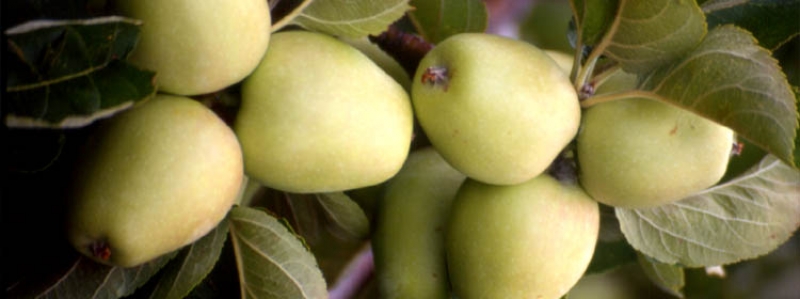
On the slopes of Etna there is an interesting production of local varieties of apples, often organic. The apple is one of the most representative species of the fruit of the Etna area, where it is relatively more widespread than in other contexts of Sicily. Such disclosure is to be related with its wide adaptability to colder environments, what allows its presence along the slopes of the volcano, at higher altitudes than other fruit. Municipalities are growing more interested in Pedara, Nicolosi, Ragalna, Biancavilla, Adrano on the south-western and Zafferana, Milo and Sant'Alfio on the east, all in the province of Catania. The range of varieties is dominated by numerous local cultivars, actually revalued on the market according to the characteristics of fine quality expressed by its product. Very popular are, for example, apples Cola, Ice Cream and Gelato Cola epicarpo white-cream, which we have mentioned above; the framework of the cultivars with red skin coloring is less clear for the most massive presence of variety of introduction also recently. Besides those mentioned, many other local varieties can still be found on Etna and represent a genetic heritage worthy of being collected, described and stored. Cultivars Maladeci Head King, Lappiona, Queen, Roll, Lappio, Cardillo, Granadina, Zuccareddi, increasingly difficult to find, refer to this vast wealth with which it is expressed, and partly still express themselves, culture apple trees on the slopes of the volcano. They, however, are likely to be lost; to traditional systems based on these local varieties in recent decades have, in fact, side by side, where conditions allow morphological soil, those made with modern varieties and cultivation protocols more rational. The harvest season is from late September to mid-October until November when the orchards are located at high altitudes (over 1,400 meters).